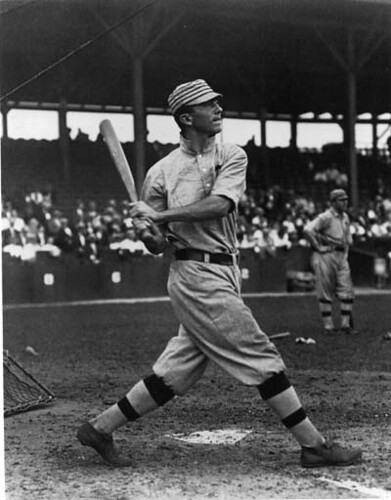Claim to fame: Next to Johnny Bench and Carlton Fisk, Munson may have been the best catcher of the 1970s. He made seven All Star appearances in the decade along with winning three Gold Gloves and the 1976 American League Most Valuable Player award. He also helped revitalize the once-proud Yankees, joining a sputtering New York club in 1969 and later contributing to back-to-back World Series titles in 1977 and 1978. Munson’s career was cut short August 1, 1979 when he died in a plane crash at 32.
Current Hall of Fame eligibility: Munson posthumously exhausted his 15 years of eligibility with the Baseball Writers Association of America in 1995 and can be enshrined by the Veterans Committee.
Does he belong in the Hall of Fame? That’s a tough question. Had Munson played a full career, he’d likely have a plaque in Cooperstown by now. He’s part of a small group of players whose Hall of Fame chances were hurt by their untimely deaths. Others in this class include Ray Chapman and Urban Shocker. Of the group, Munson may come closest to enshrinement on playing merit. He hit .292 lifetime with 1,558 hits and was a cornerstone of the Yankee rebirth. I’d probably vote for him if I could.
There are a few men in the Hall of Fame whose careers ended prematurely, be it for injury, illness or death. These men include:
- Roy Campanella
- Roberto Clemente
- Dizzy Dean
- Ed Delahanty
- Lou Gehrig
- Addie Joss
- Sandy Koufax
- Kirby Puckett
- Rube Waddell
- Ross Youngs
Munson’s numbers fall short of the only catcher on that list, Campanella, who dominated more in fewer seasons, though I liken Munson favorably to Joss or Youngs. Joss won 160 games with a 1.89 lifetime ERA before dying of meningitis at 31 in 1911, while Youngs hit .322 in ten seasons before dying of Bright’s disease in 1927 at 30. Munson played more seasons than either player and rates comparably well or better on some of the Hall of Fame metrics. That being said, it took until the 1970s for the Veterans Committee to tab Joss or Youngs. In addition, Youngs had a teammate on the committee, Frankie Frisch, who helped get several friends enshrined. I don’t know if Munson has any such booster on the current committee.
It’s worth noting that historically, the Veterans Committee has generally rewarded players who got significant Hall of Fame vote totals from the BBWAA, and Munson was mostly an afterthought after peaking with 15.5 percent of the vote in his first year on the ballot, 1981. Even then, when Munson likely received extra votes from writers who didn’t know it was okay to vote otherwise, the Yankee catcher still finished 16th. Gil Hodges, Roger Maris and three other men who have yet to be enshrined as of this writing received more votes in 1981 than Munson. I wouldn’t be surprised if the committee considers Hodges or even Maris before Munson.
Even with a full career, Munson would face slim odds of making Cooperstown. Catchers have about as easy a time earning plaques as relief pitchers, stolen base specialists or any defensive whiz not named Brooks Robinson or Ozzie Smith. Two other fine catchers from Munson’s era awaiting enshrinement are Bill Freehan and Ted Simmons. Both had more All Star appearances than Munson by the time they were 32. In addition, Freehan had five Gold Gloves before his 28th birthday while Simmons amassed 2,472 career hits and a .285 lifetime batting average.
Interestingly, both Freehan and Simmons were one-and-done Hall of Fame candidates, meaning they got less than 5 percent of the vote their only year on the ballot which automatically disqualified them from future votes. Freehan spent his career with Detroit while Simmons did his best work with St. Louis and Milwaukee. Had Freehan or Simmons played in a comparably-sized media market to Munson or died in similarly tragic circumstances, I think their Hall of Fame bids would have received better support.
Does he belong in the Hall of Fame? is a Tuesday feature here.

